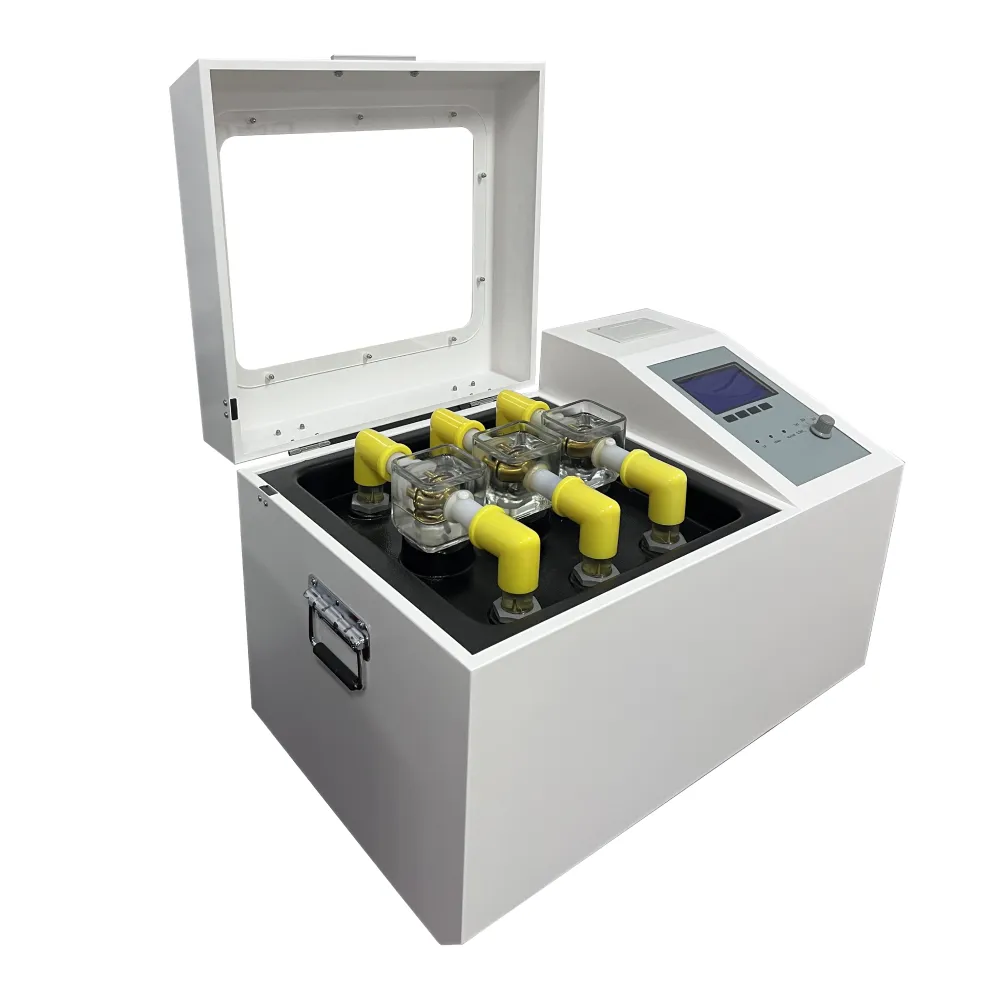TEL:
+86-0312-3189593
 English
English

Telephone:0312-3189593

Email:sales@oil-tester.com
7 月 . 12, 2024 06:05
Back to list
Measurement of current using a current transformer for accurate monitoring and analysis.
Current measurement using current transformers (CTs) is a crucial step in ensuring the safety and efficiency of electrical systems. CTs are widely used in a variety of applications to accurately measure current flow and protect equipment from overloads or short circuits. In this article, we will explore the principles of current measurement using CTs and the importance of proper installation and calibration.
A current transformer is a type of instrument transformer that is used to step down current in a power system to a level that can be safely measured by instruments or protective devices. CTs consist of a primary winding, which carries the current to be measured, and a secondary winding, which is connected to measuring or protective devices. The secondary winding is typically rated at a lower current level, such as 5A or 1A, to ensure compatibility with standard instruments.
One of the key advantages of using CTs for current measurement is their ability to isolate measuring instruments from the high voltage of the power system. By stepping down the current to a safe level, CTs prevent damage to instruments and ensure the safety of personnel working on the system. In addition, CTs provide accurate and reliable measurements of current flow, which is essential for monitoring and controlling electrical systems.
To ensure accurate current measurement using CTs, it is important to properly install and calibrate the transformers

current measurement using ct. CTs should be installed on the primary conductor in a way that ensures maximum magnetic coupling between the primary and secondary windings. This typically involves passing the primary conductor through the center of the CT core to ensure maximum flux linkage. Calibration of CTs is also critical to ensuring accurate current measurement. CTs should be calibrated periodically to account for factors such as temperature variations, aging of the transformer, and changes in the load conditions of the power system. Inaccurate calibration of CTs can lead to erroneous measurements and compromise the safety and reliability of the electrical system. In conclusion, current measurement using CTs is an essential tool for ensuring the safety and efficiency of electrical systems. By accurately measuring current flow and providing isolation from high voltages, CTs play a crucial role in protecting equipment and personnel from harm. Proper installation and calibration of CTs are key factors in ensuring accurate current measurement and maintaining the reliability of electrical systems.

current measurement using ct. CTs should be installed on the primary conductor in a way that ensures maximum magnetic coupling between the primary and secondary windings. This typically involves passing the primary conductor through the center of the CT core to ensure maximum flux linkage. Calibration of CTs is also critical to ensuring accurate current measurement. CTs should be calibrated periodically to account for factors such as temperature variations, aging of the transformer, and changes in the load conditions of the power system. Inaccurate calibration of CTs can lead to erroneous measurements and compromise the safety and reliability of the electrical system. In conclusion, current measurement using CTs is an essential tool for ensuring the safety and efficiency of electrical systems. By accurately measuring current flow and providing isolation from high voltages, CTs play a crucial role in protecting equipment and personnel from harm. Proper installation and calibration of CTs are key factors in ensuring accurate current measurement and maintaining the reliability of electrical systems.
Latest news
-
Differences between open cup flash point tester and closed cup flash point testerNewsOct.31,2024
-
The Reliable Load Tap ChangerNewsOct.23,2024
-
The Essential Guide to Hipot TestersNewsOct.23,2024
-
The Digital Insulation TesterNewsOct.23,2024
-
The Best Earth Loop Impedance Tester for SaleNewsOct.23,2024
-
Tan Delta Tester--The Essential Tool for Electrical Insulation TestingNewsOct.23,2024





